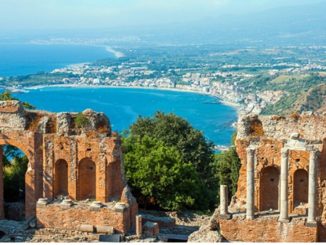
My wife and I have taken many holidays in the USA to visit friends and relatives and generally just to enjoy various aspects of American culture.
When my wife was younger she had been employed as a riding instructor at a Summer Camp in Vermont after which she had travelled extensively across the continent, whereas my previous experiences were confined to naval ports on the East Coast and their environs.
We had been several times to NY to visit a friend who was working there and we honeymooned in New England. Subsequent holidays involved trips to Las Vegas, both together and separately and a trip to Denver to visit one of my cousins, however most of our holidays were spent on the east coast including a month in Florida in 2016.

Our holiday to Denver in 2018 included a road trip to Las Vegas and it was on that trip that we discovered one of the USA’s greatest contributions to civilisation; the National Park. Without doubt the majestic landscapes of the mid and far west are beyond compare and bring something to our souls that cannot be put into words. Driving across the Rockies into Utah and down into Arizona and Nevada was one of the best journeys we have ever undertaken and the only option to assuage that yearning for big skies, big rocks and smoked brisket is to go back and start again.
In 2019 we decided to approach from the other direction, fly into SF and visit the National Parks in California to see the Giant Redwoods and Sequoias up in the Sierra Nevada Mountains. It was whilst planning that trip that I saw to the east of Yosemite, the abandoned former mining town of Bodie. Yosemite is so vast that taking a day out of our visit to shoot off to another area seemed like a bit of a stretch, but the chance of crossing the upper road through the park, which had only just reopened due to the winter’s high snowfall was the clincher, and we planned to take the town in on one of our days there. (Picture 1 San Francisco)
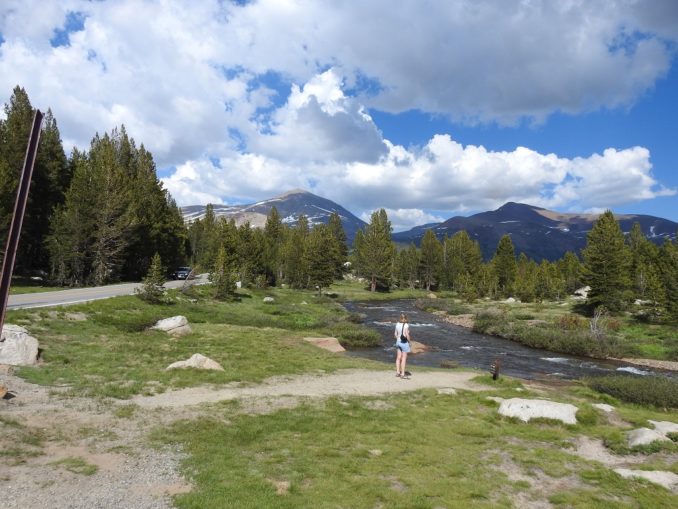
Bodie is situated off State Road 270 which we approached from the south on Highway 395, after transiting the Tioga Pass in Yosemite. (Picture 1a) We were there in July and there was still snow on the ground in Yosemite courtesy of global warming. Apparently in winter, in Bodie itself, snowfall can average between three and six feet on the flat with drifts up to 20 feet deep. The SR270 is such a good road that Google Earth ™ haven’t even bothered to drive up or down it and it’s only when you get to the park entrance that they have a shot of it! (Picture 2 Tioga Pass Yosemite)
The town itself is a State Historic Park (never realised they existed before then), and was purchased from the family of the last major landowner in the area by California State Parks in 1962 to preserve a piece of the history of California’s Gold Rush. Prior to 1962 the land owners had hired caretakers to protect the town from looters and vandals. They did a good job. Today, volunteers and employees of the Park and the Bodie Foundation help to preserve this monument to the not so distant past with some of them living on site throughout the year in a few of the partially restored houses.
Bodie consists of about 5% of the buildings that were there in the town’s heyday from 1877-1881, but give a good representation of what the place was like then.
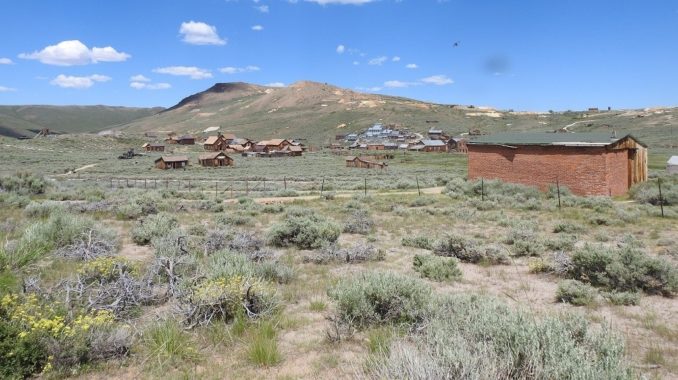

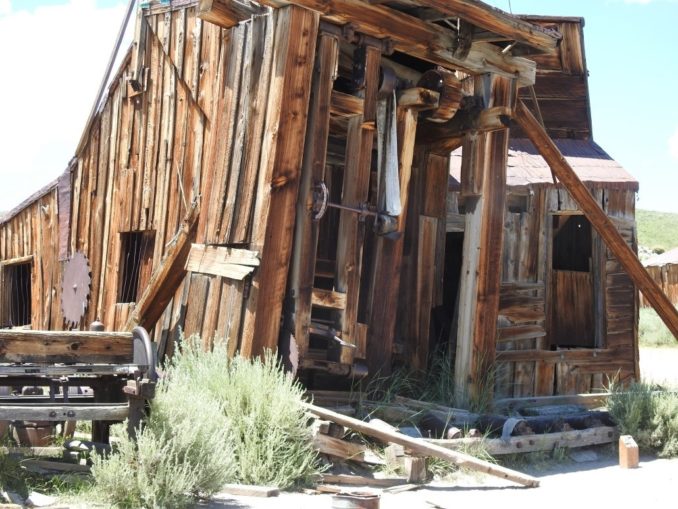
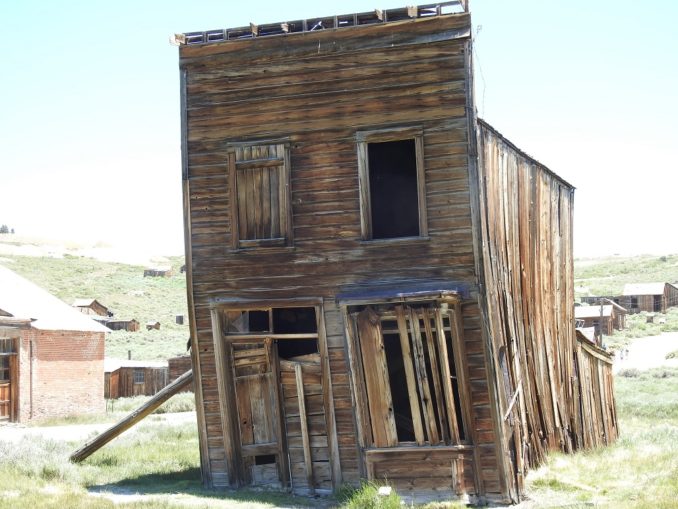
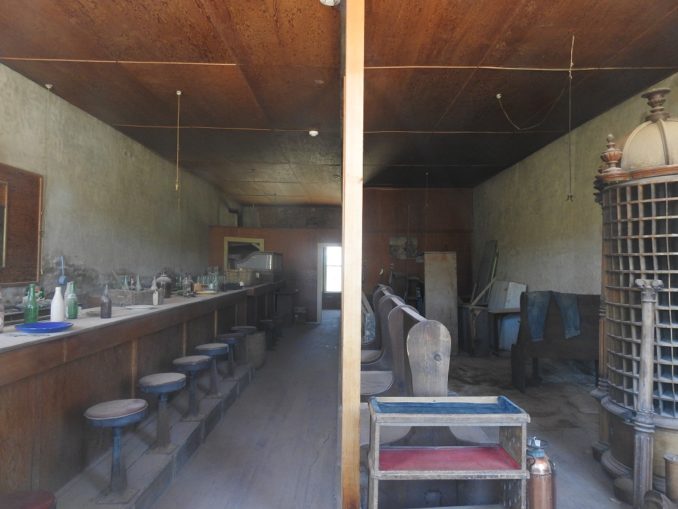

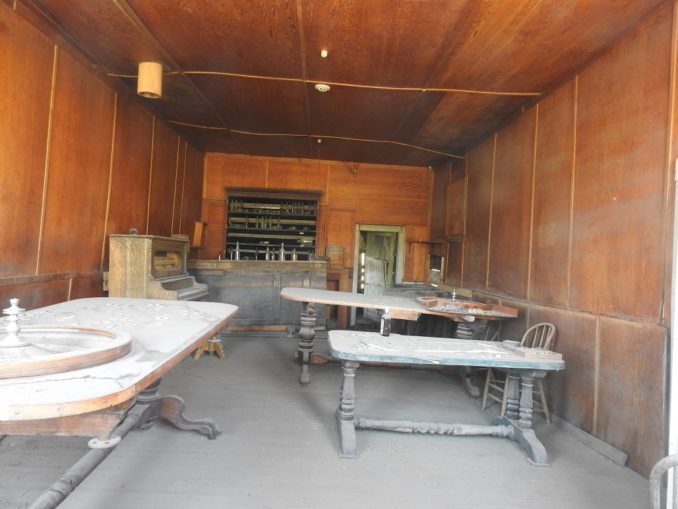
The buildings are not restored but are preserved in a condition that the guide book described as ‘arrested decay’, with much of it gently fading into the past despite efforts to repair and stabilize the buildings. Some of the interiors remain just as they were when the place was abandoned, which I find utterly fascinating.
I guess also that if this place were in the UK, the buildings would have rotted and collapsed before now, but I guess the lack of a maritime climate and low humidity helps to prevent that. (Pictures 4, 5, 6, 7, 8, 9, 11)
The cemetery, like many others, is worth a walk out of town to have a look around. There are several areas and although the scrub abounds there are some well-maintained monuments.

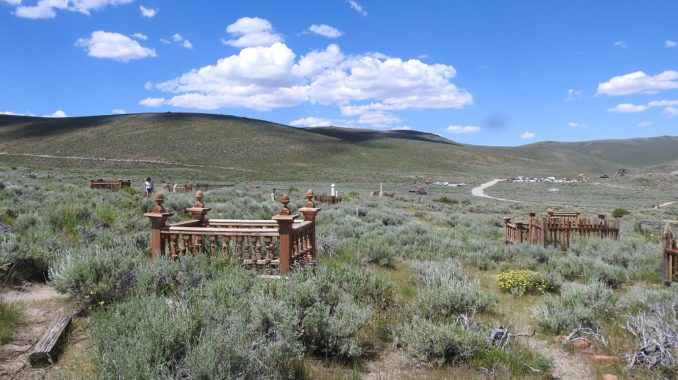
Anyway, the town’s creation was a product of the discovery of gold deposits in 1859 by a WS Bodey and chums. Despite promising to keep the find secret, he went back later that year and perished in a blizzard! Eventually millions of dollars’ worth of gold and silver were extracted from the hills and the town that grew up was named after him. Mining began in the 1860s but the boom years were in the mid-1870s with eventually almost 10,000 tons of ore being extracted over a period of 25 years. By 1879 the town had a population of about 8,500 and boasted more than 2,000 buildings. Naturally the gold attracted the usual array of bars, brothels and dance halls, plus supporting actors keen to strip the wealth from the guys doing the mining. (Picture 20) Lawless and with a reputation for good times bad things it was described in 1881 by the Rev. FM Warrington as “a sea of sin, lashed by the tempests of lust and passion.” You can understand why it attracted the interests of an old sea dog! Alas by 1886 the deposits were worked out and the population declined to about 1,500. In 1892 a major fire destroyed a lot of buildings and despite briefly regenerating in the early 20th century, thanks to the introduction of cyanide extractive techniques to recover gold and the use of electrical power, a further large fire in 1932 destroyed all but 10% of the place. It was abandoned totally in the 1940’s after the gold ran out.
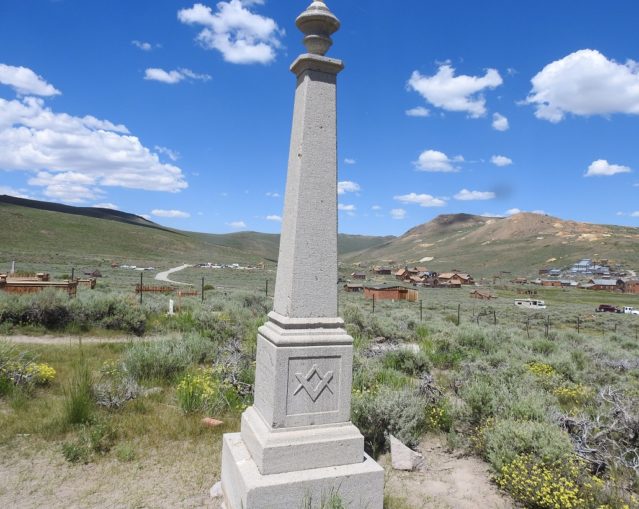

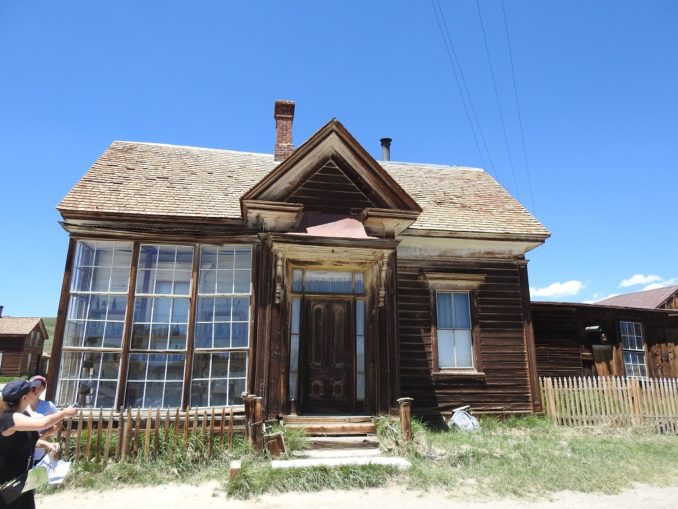
Bad for them, good for us.


Loved it! What a place. This day out became one of the highlights of our trip and is a genuine example of the gold rush boom and bust in the late 19th and early 20th centuries.

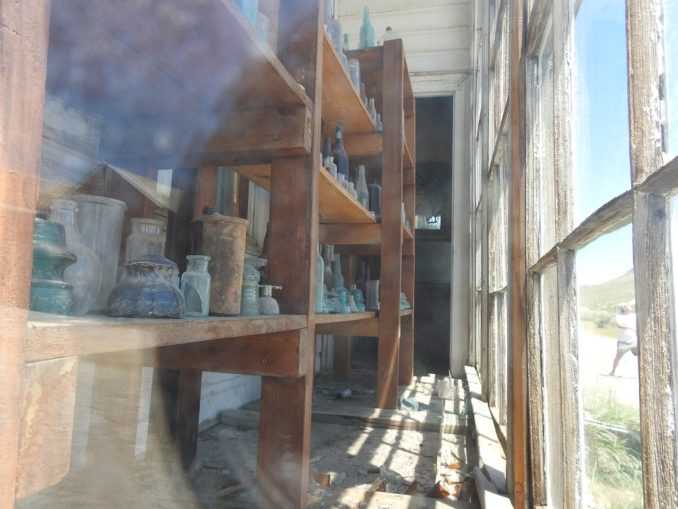
Photos are my own
Information courtesy of California State Parks Department, Sacramento CA and the Bodie Foundation, Bridgeport CA.
© Blowmedown 2023

